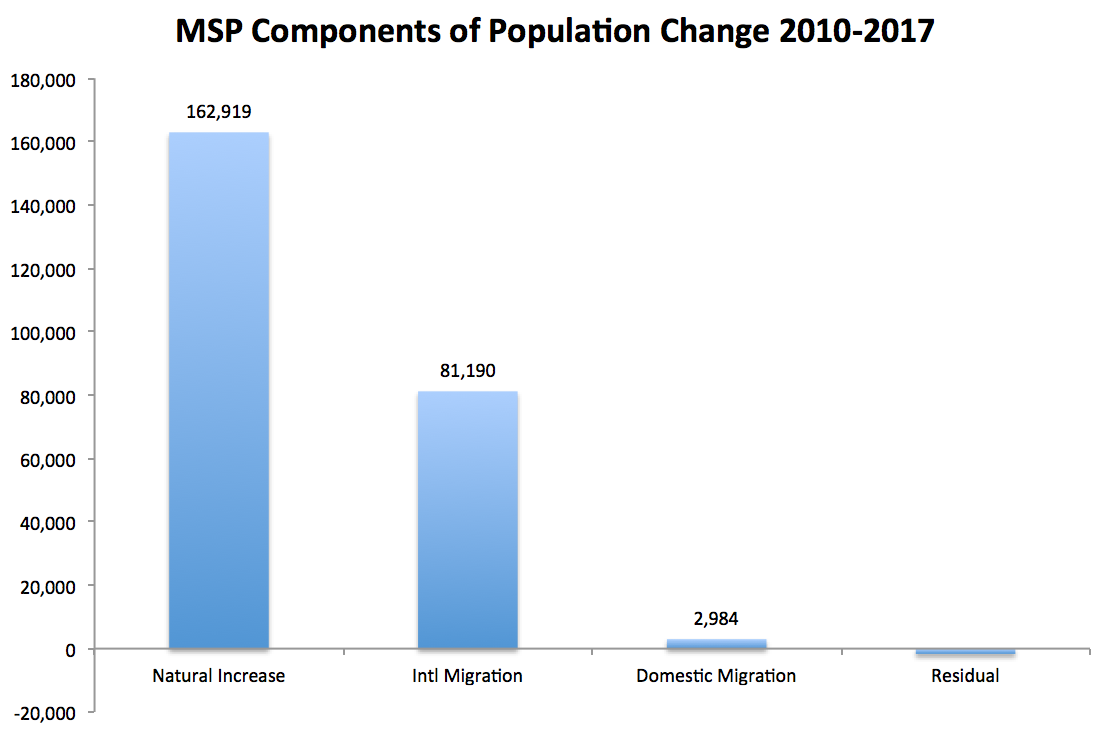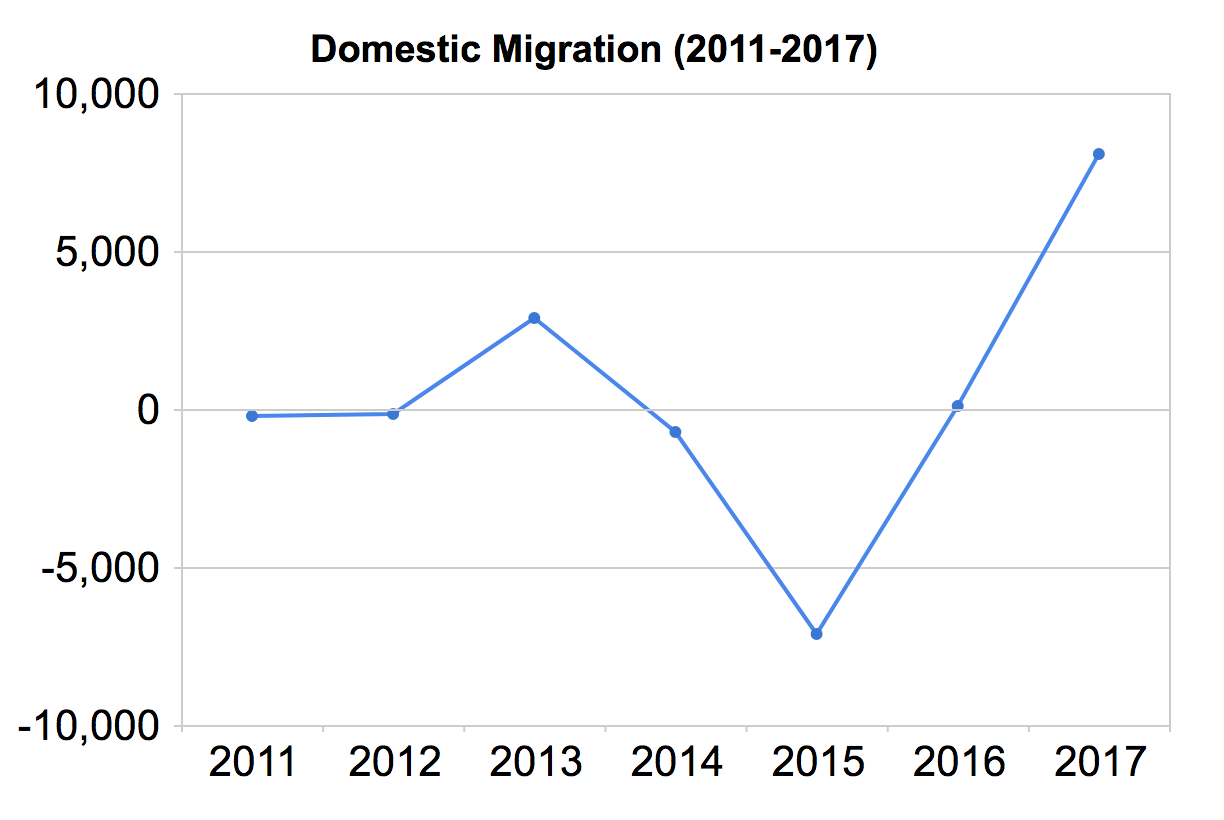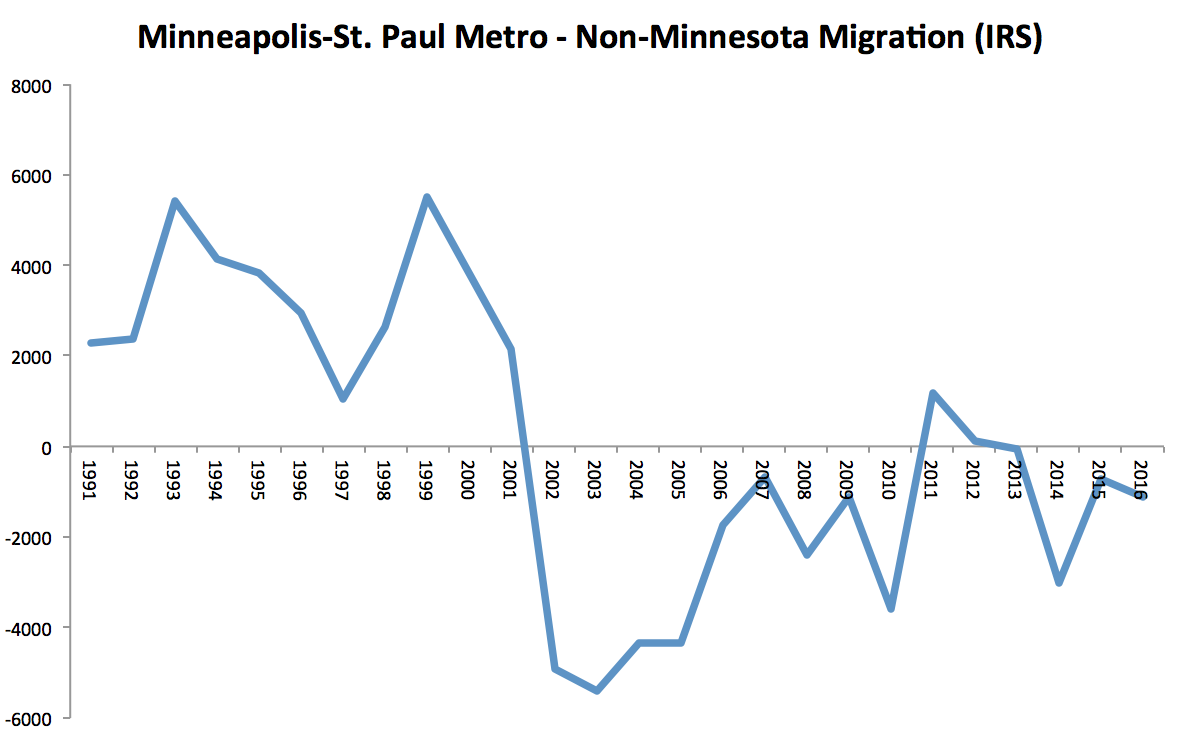Someone who took issue with my treatment of Minneapolis’ attraction issue sent me a link to this Star Tribune piece noting that migration into the region increased last year.
To be clear: this article is from March of this year, so I’m late to the game in analyzing it. But I don’t recall seeing it previously.
Here’s an excerpt:
A surge in people moving from elsewhere in the country to the Twin Cities last year contributed to the metro area’s population growth, which added a quarter-million residents since 2010, according to the latest estimates from the U.S. Census Bureau….The Twin Cities’ growth lags that of its rival metros, such as Seattle, Portland and Denver, and it’s well behind by the population boom in Florida and Texas cities. But those who analyze the data are optimistic about the impact on the local economy.
Matt Lewis tracks the movement of “working professionals” — specifically people over 23 with an associate degree or higher — to the metro area for Greater MSP. Looking at five-year averages, he recently found that 2016 was the best year for attracting new professionals to the region since tracking began in 2007.
“When we’re looking at professionals in the workforce, something happened where our performance notably jumped in 2016 — and that trend looks like it’s continuing,” Lewis said.
…
The net number of people who moved to the Twin Cities from elsewhere in the country, versus those who left, rose dramatically last year, according to the new census data, which is derived from the American Community Survey. And 2017 was the first year since 2001 that more people moved to Minnesota from other states than moved out of state, according to census data crunched by the state demographer’s office.
Demographers won’t be able to explain precisely who these people are until more data becomes available. But demographer Susan Brower said it is good news for the local economy, because existing residents are dying in higher numbers and births are relatively flat.
Everything in the article looks correct to me, but I think comes across with an overly optimistic spin.
The lede is a bit misleading. The region has added a quarter of a million people since 2010, but the uptick in domestic migration had virtually nothing to do with it. Here are the actual sources of that population change.

It’s all coming from more births than deaths, and international migration.
Net domestic migration did tick up last year. Here’s the chart of year by year domestic migration since 2010:

There has been an increase over the last couple of years, but the region is not among the biggest gainers nationally. MSP had domestic migration of 8,095 last year. But Columbus drew 12,562, Kansas City drew 8,532, and Indianapolis drew 7,763. These are much smaller regions meaning their rates of net domestic migration are much higher than Minneapolis. MSP isn’t even leading the Midwest here. (It’s also comparable to those cities in total population growth).
It’s also the case the Minneapolis’ draw remains almost entirely regional. The vast bulk of positive migration comes into the region from Wisconsin, the Dakotas, Illinois, Iowa, and Michigan. Although as a bi-state metro where in-state migration from Minnesota is not even the top source (that’s Wisconsin) this stat is perhaps less meaningful, we see that Minneapolis-St. Paul actually has negative migration with the country outside of Minnesota, and has been underperforming the 1990s.

The Minneapolis-St. Paul metro area even loses people to California, which is quite a feat considering the cost differential. And it also loses people to Washington and Oregon.
I used IRS tax return data for this. You can also get some data of this type via the ACS, but not as long a series. If someone wants to look at that by all means please do. This is limited to tax filers, and some are excluded for various reasons. The ACS is an actual survey, but has margin of error considerations. (You can also look at migration by characteristics in it, which is interesting). I haven’t dug into the ACS lately.
Should you be interested in MSP migration rolled up to the state level as sourced from the IRS, here’s a spreadsheet.
Here’s my bottom line. A one or two year uptick in a key measure is good news and something to be celebrated. But when local boosters are sending me this to try to suggest MSP is different from the rest of the Midwest, that’s a problem. Because it’s exactly like the other higher Midwest performers like Columbus and Indianapolis.
Minneapolis is still failing at attracting national talent and that’s a 911 emergency for the region. Nothing in this data changes that as of yet.
This piece appeared on NewGeography (originally at Urbanophile)
______________________
Aaron M. Renn is a senior fellow at the Manhattan Institute and contributing editor at City Journal. Follow him on Twitter here.
This piece originally appeared in NewGeography
